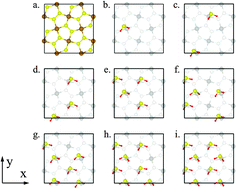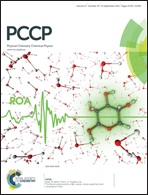Quantifying the origin of inter-adsorbate interactions on reactive surfaces for catalyst screening and design†
Abstract
The adsorption energy of reactant molecules and reaction intermediates is one of the key descriptors of catalytic activity of surfaces and is commonly used as a metric in screening materials for design of heterogeneous catalysts. The efficacy of such screening schemes depends on the accuracy of calculated adsorption energies under reaction conditions. These adsorption energies can depend strongly on interactions between adsorbed molecules in the adlayer. However, these interactions are typically not accounted for in screening procedures that use DFT-based zero-coverage adsorption energies. Identifying the physical mechanisms behind these interactions is essential to model realistic catalyst surfaces under reaction conditions and to understand the dependence of adsorption energies on reaction parameters like surface strain and composition. This article describes a method to quantitatively resolve the observed inter-adsorbate interactions into various direct adsorbate–adsorbate interactions (i.e. Coulombic and steric) and surface-mediated interactions (i.e. adsorbate-induced surface relaxation and change in electronic structure) by combining density functional theory and cluster-expansion calculations of coverage-dependent adsorption energies. The approach is implemented on a model catalyst surface of FeS2(100) reacting with H2S molecules. We find that the adsorption energy of H2S molecules can be affected by over 0.55 eV by the repulsive inter-adsorbate interactions caused primarily by the adsorbate-induced changes to the electronic structure of the FeS2 surface. These interactions also show a strong monotonic dependence on surface strain, being three times stronger on compressively strained surfaces than on surfaces under tensile strain. The large magnitude of inter-adsorbate interactions as well as their strong dependence on lattice strain demonstrate the need for using coverage-dependent adsorption energies for more accurate screening, for example for strained catalytic systems like core–shell and overlayer structures.


 Please wait while we load your content...
Please wait while we load your content...